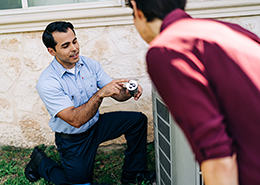Ultraviolet germicidal irradiation, or UVGI, is a method of disinfection using UV-C germicidal light at the 254-nanometer (nm) frequency to kill or deactivate microorganisms. Introduced in the late 1800s, it first came onto the scene in 1903, when Danish scientist Niels Finsen received a Nobel Prize for medicine for using UV-C light to combat tuberculosis.
UVGI was used for water disinfection in the early 1900s, and for both water and airstream disinfection in the post-WWII era. However, it fell out of favor in the 1960s as new antibiotics and cleaning agents came to market and mechanical ventilation in buildings improved. In the 1990s, demand for the germicidal technology returned, following a resurgence of antibiotic-resistant germs.


.webp)




